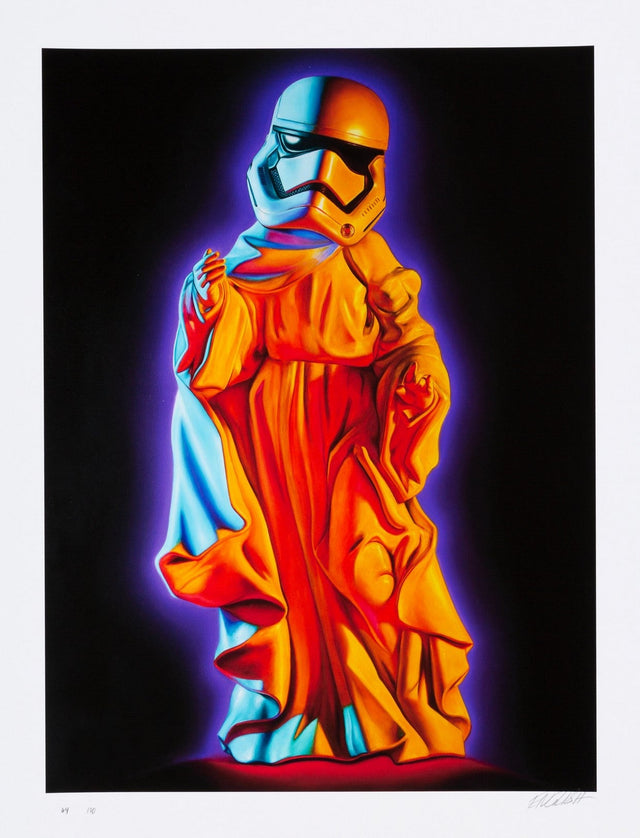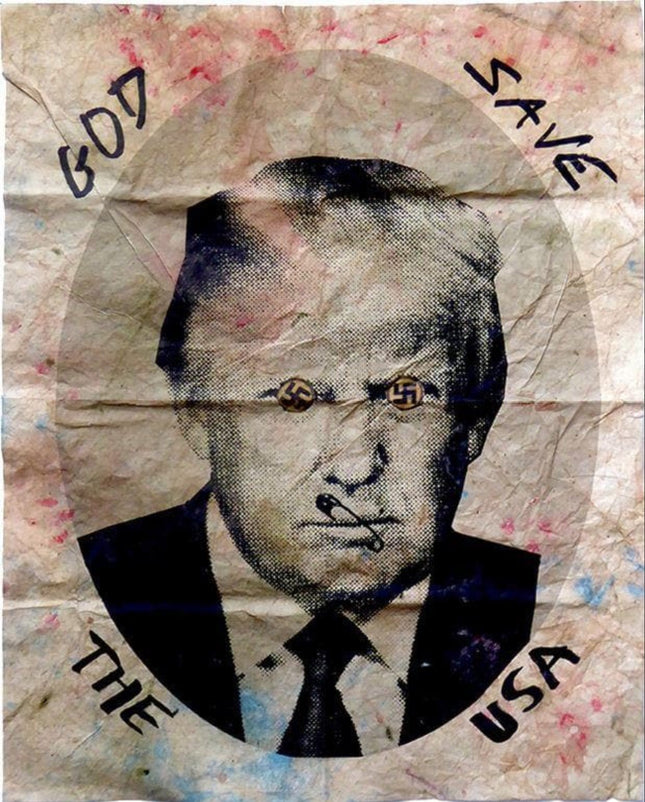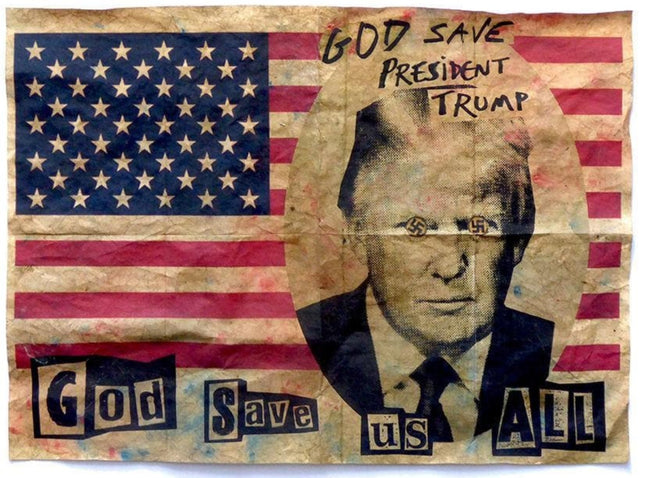
God

Jamie Reid God Save the USA Swastika Eyes Giclee Print by Jamie Reid
God Save the USA- Swastika Eyes Artwork Giclee Limited Edition Print on Hand Distressed Art Paper by Pop Culture Graffiti Artist Jamie Reid. Signed: Yes Medium: Giclee, Print Edition Type: Limited Edition Edition Size: 313 Size (cm): 52 x 71 -20.5in x 38 - Printed onto hand-distressed, off-white paper, Reid captures the retro style of his early work in this contemporary take-down of American politics. God Save the USA (Swastika Eyes) is from a limited edition of 313, signed and numbered by the artist, and each edition has a slight, unique variation due to the distressed paper.
$692.00$588.00

Jamie Reid God Save Us All Giclee Print by Jamie Reid
God Save Us All Artwork Giclee Limited Edition Print on Hand Distressed Art Paper by Pop Culture Graffiti Artist Jamie Reid. Signed: Yes Medium: Giclee, Print Edition Type: Limited Edition Edition Size: 313 Size (cm): 82 x 58 - 32.3in x 22.8 God Save Us All is a timely comment on the state of American politics, as the safety-pinned British figurehead is swapped for a swastika-eyed President Trump. Against a distressed US flag, Reid adds his signature cut-up collage text.
$692.00$588.00



